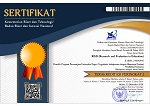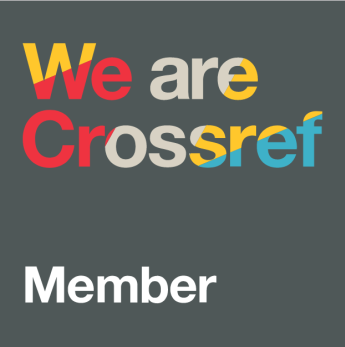Evaluation of the bridging course offered at a university to foreign students: Batches of 2012 and 2013
DOI:
https://doi.org/10.21831/reid.v1i2.6667Keywords:
Evaluation, Bridging course, CIPP, BIPA, KNB StudentsAbstract
This evaluation was a case study of the bridging language program offered at YSU to KNB students, it evaluated the generations 2012/2013. The focus of this evaluation was to evaluate the strengths and weaknesses of the bridging program. This was a summative evaluation used the CIPP method. It was a pragmatic parallel mix-method design research. The analysis technique was descriptive for the qualitative data; and it was descriptive statistical for the quantitative data; Triangulation was used. 15 students, 6 teachers, 10 tutors, 3 administrators were involved. In each component of the evaluation strengths and weaknesses were found. The main strengths were: Clear cultural objectives, experience teachers, tutorials helped students a lot. The main weaknesses were: There is not clear criteria of the level to be reach, tutors lack training and time to prepare, material and assessment needs to be improve, students don't reach an upper intermediate level of the language.References
Fitzpatrick, J.L., Sanders, J.R. & Blaine, R.W. (2010). Program evaluation: Alternative approaches and practical guidelines (4th ed.). New Jersey: Pearson Education.
Garavalia, L. S., et al, (1999). Constructing the course syllabus: Faculty and student perceptions of important syllabus components. Journal on Excellence in College Teaching, 10(1), 5-21.
Killen, R. (2009). Effective teaching strategies: Lessons from research and practice (5th ed.). Australia: CENGAGE Learning.
KNB Program. DIKTI. Accessed on July 23rd 2014, from: http://www.knb.dikti.go.id/index.php
Lee, M. (2012). History of study abroad: Part 1 (1190 – 1900). USA: Go overseas webpage. Retrieved on November 27th 2014, from: www.gooverseas.com/go-abroad-blog/history-study-abroad-part-1
Mardapi, D. (2008). Teknik penyusunan instrumen tes dan non tes. Yogykarta: Mitra Cendekia Press.
Mertens, D. M. (2010). Research and evaluation in education and psychology: integrating diversity with quantitative, qualitative and mixed methods 3rd ed. USA: SAGE Publications, Inc.
The Statistical services center (2001). Approaches to the analysis of survey data. The University of Reading Statistical Services Centre. Biometrics advisory and support service to DFID. Article. Retrieved on February 22nd 2015, from:http://www.reading.ac.uk/ssc/resources/Docs/Approaches_to_the_analysis_of_survey_data.pdf
Stufflebeam, D. L., Madaus, G.F. & Kellaghan, T. (2002). Evaluation models: viewpoints in education and human services evaluation (2nd ed.). Dordrecht: Kluwer Academic Pubishers.
Downloads
Published
How to Cite
Issue
Section
License
The authors submitting a manuscript to this journal agree that, if accepted for publication, copyright publishing of the submission shall be assigned to REiD (Research and Evaluation in Education). However, even though the journal asks for a copyright transfer, the authors retain (or are granted back) significant scholarly rights.
The copyright transfer agreement form can be downloaded here: [REiD Copyright Transfer Agreement Form]
The copyright form should be signed originally and sent to the Editorial Office through email to reid.ppsuny@uny.ac.id

REiD (Research and Evaluation in Education) by http://journal.uny.ac.id/index.php/reid is licensed under a Creative Commons Attribution-ShareAlike 4.0 International License.






.png)





